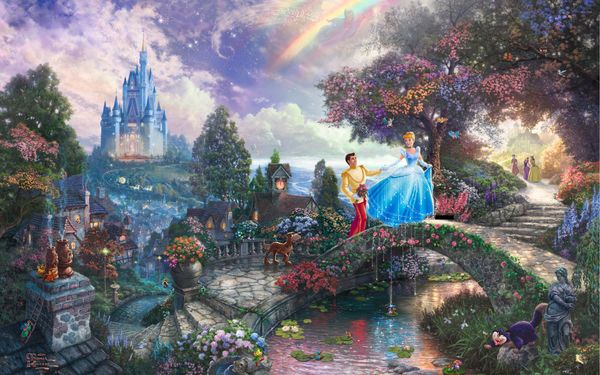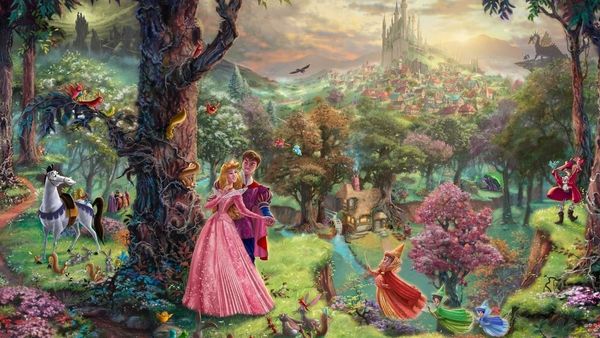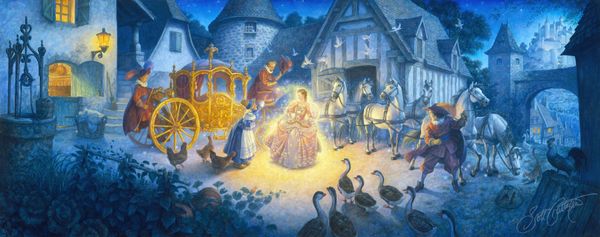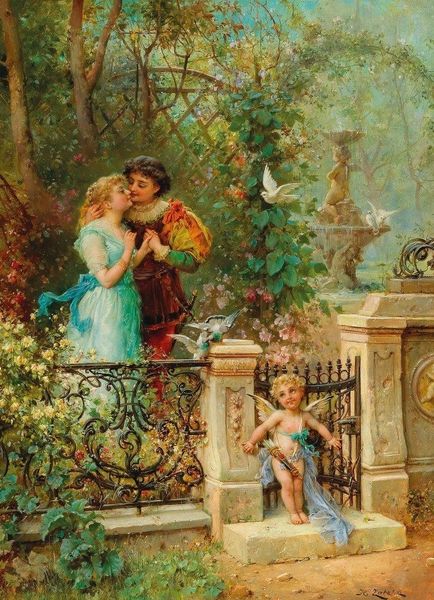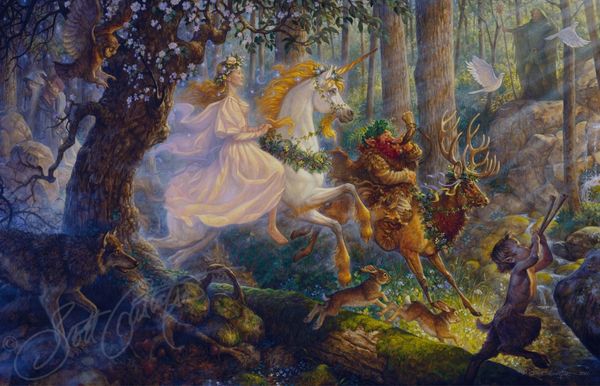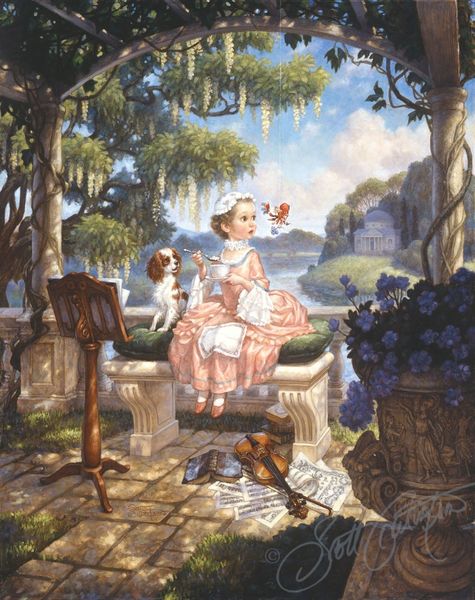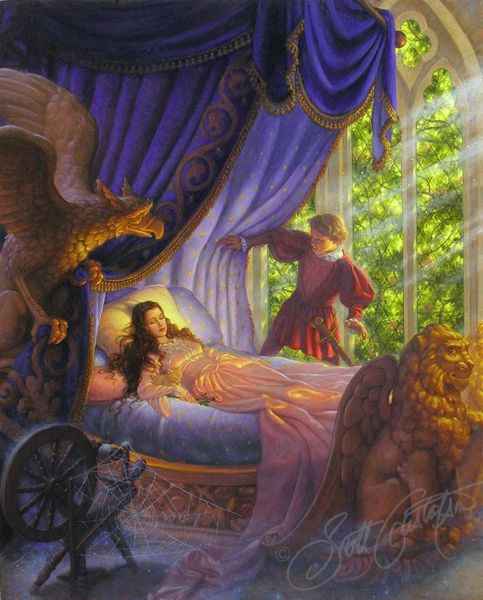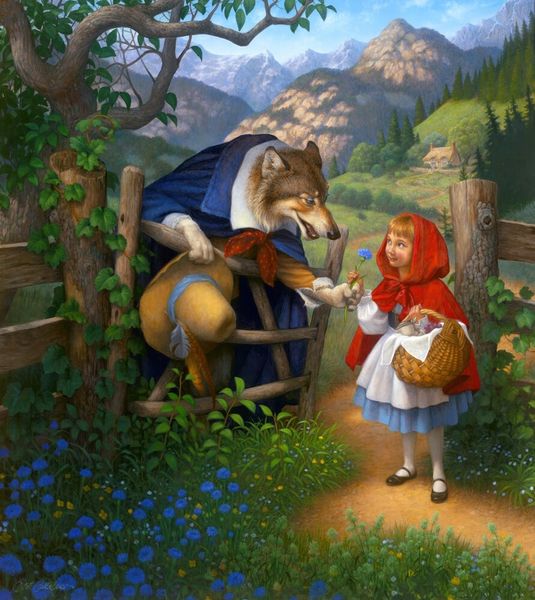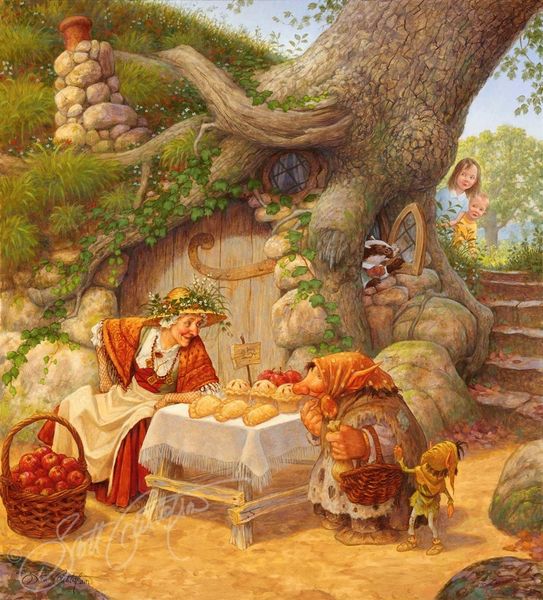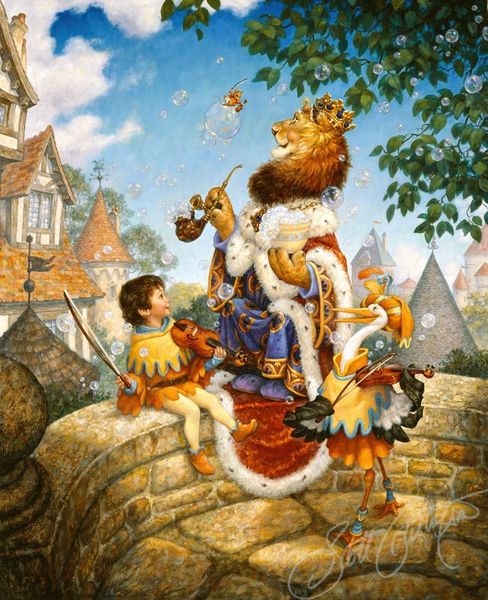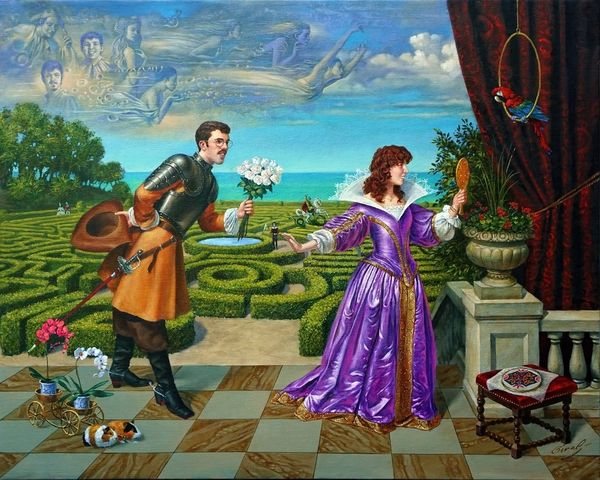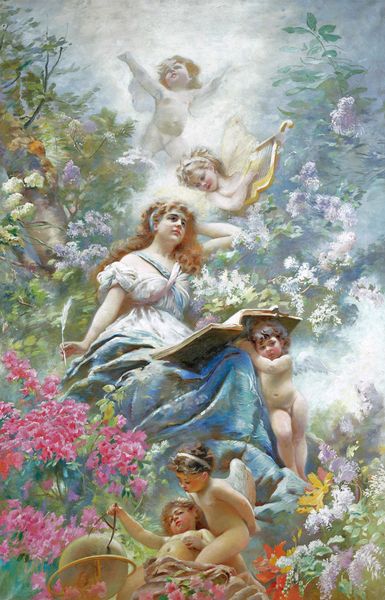
painting, oil-paint
#
tree
#
contemporary
#
painting
#
oil-paint
#
landscape
#
impressionist landscape
#
figuration
#
romanticism
#
naive art
#
natural-landscape
#
genre-painting
Copyright: Thomas Kinkade,Fair Use
Curator: What strikes me first about this piece, "Gone With the Wind," is its overt sense of nostalgic romanticism. It feels very saccharine. Editor: The work is by Thomas Kinkade. While undated, its style definitely aligns with his recognizable oeuvre, deploying oil paint in a manner that suggests a blend of impressionist and romantic landscape traditions. Curator: The romanticism, though, feels…loaded. We have figures who are undeniably meant to evoke Rhett Butler and Scarlett O’Hara of Gone with the Wind. How do we, today, confront art that unabashedly romanticizes a vision of the antebellum South? Editor: That’s a vital question. Considering Kinkade's role in shaping contemporary art's accessibility through mass production and gallery systems, it reflects how idealized imagery perpetuated within these channels shaped the cultural understanding of a contentious historical period. Curator: Exactly. The soft focus, the almost aggressively idyllic landscape...it all serves to obscure the brutal realities of slavery and oppression. We need to ask: Who is this fantasy for? Who is excluded from it? This visual language can create complicity with problematic power dynamics of that period. Editor: Absolutely, we cannot separate the style from the socio-political implications. Kinkade’s popularity raises crucial points about the market-driven desire for soothing visuals often divorced from historical complexities. We must critique how institutions may support creating potentially harmful public dialogues by exhibiting this kind of art. Curator: Precisely. And to be truly responsible in our engagement, we need to place it within an intersectional framework that confronts its implications regarding race, gender, and the enduring legacy of colonial power. The painting aestheticizes what was an undeniable historic injustice. Editor: This analysis calls on museums to facilitate art interpretation with due contextual background to cultivate meaningful interaction, and to prevent simplistic and decontextualized aesthetic engagement with works like this. Curator: I agree. It demands of us to examine our role in promoting the market value of artworks that can be insensitive at their core, without relevant discourse to confront it. Editor: Indeed, that dialogue allows for a necessary reflection and potentially constructive steps forward.
Comments
No comments
Be the first to comment and join the conversation on the ultimate creative platform.


